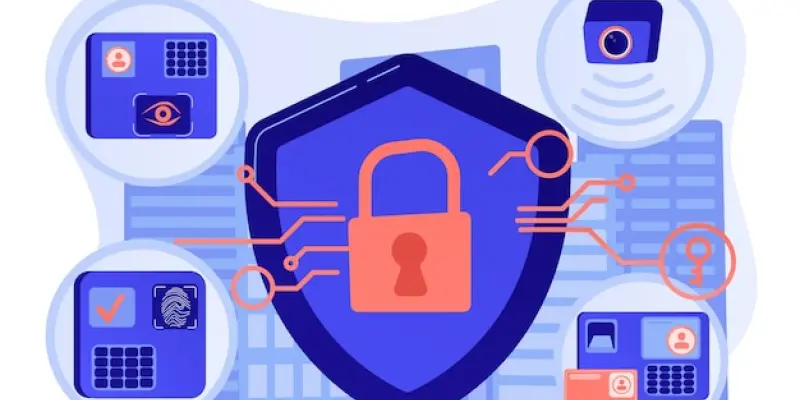In recent times, the threat landscape has become increasingly alarming with the rise of sophisticated infostealers targeting banking credentials and personal data. These malicious software variants have effectively infiltrated systems, exposing sensitive information from individuals and organizations alike. A recent study found that over 30,000 Australians were affected by these threats, leaking their banking credentials to malicious entities. The study, conducted by cybersecurity experts, examined logs over several years, revealing the troubling growth in infostealer activity. Despite some decline in breaches in recent years, the damage inflicted by infostealers was significant, emphasizing their emerging threat. This development posed severe risks in the financial sector, where unauthorized access to accounts and identity fraud were rampant. There is an urgent need to address and combat this issue with enhanced security measures to protect digital assets and maintain consumer trust.
The Infostealer Economy
Infostealers have matured into a highly orchestrated marketplace wherein stolen credentials are traded like commodities. These malware variants extract critical data—ranging from passwords and authentication cookies to intricate financial details—while bypassing traditional defenses. Once gathered, this data finds its way into the hands of access brokers, who then peddle it to other cybercriminals. These transactions enable bad actors, including ransomware groups, to exploit vulnerabilities within organizations. The business model behind infostealers is compartmentalized, with specialized roles such as distributors and data monetizers collaborating effectively. This seamless operation heightens the lucrativeness of infostealers, driving more cybercriminals to partake in this activity. Notably, infostealers are adept at capturing authentication shortcuts, such as cookies that circumvent multi-factor verification processes. Consequently, infostealers are not only a threat to individuals. They also endanger institutional security as criminals repeatedly intervene in online interactions previously thought secure. The infostealer marketplace has evolved to evade detection by traditional cybersecurity measures. Threat actors continue to enhance their methods, finding ways to penetrate even robust MFA setups. With the ability to hijack user sessions through captured authentication tokens, infostealers pose a unique challenge to security experts. Continuous access evaluation, beyond the initial login phase, becomes imperative as merely focusing on safeguarding entry points is not enough. This marketplace’s success is a testament to its sophistication, with criminals sharing intelligence such as network configurations and potential attack paths to enhance attacks. Identifying and understanding these evolving strategies demand proactive collaboration among cybersecurity professionals and organizations. Consequently, financial institutions must upgrade their defense mechanisms and build a comprehensive strategy to mitigate the risks posed by this quickly advancing cybercrime method.
Strengthening Security Measures
Traditional methods geared toward protecting infrastructures have proven inadequate against the menacing tactics of infostealers. This realization pushed financial institutions toward reevaluating and reinforcing their security postures. Significant attention has shifted towards instituting measures beyond the conventional two-factor authentication. Implementing continuous access evaluation stands as a critical improvement. Such real-time scrutiny of user sessions is crucial in detecting anomalies and halting unauthorized access. Additionally, fortifying authentication processes for high-risk transactions within authenticated sessions significantly mitigates risk. Institutions are tasked with the responsibility of swift identification and neutralization of compromised tokens. This proactive approach prevents potential damage before it permeates further into the system. To confront infostealers effectively, creating holistic security programs that incorporate customer education becomes indispensable. Raising awareness about infostealer threats empowers customers to recognize potential risks and adopt vigilant online practices. These initiatives can be instrumental in minimizing vulnerabilities stemming from user behavior, arguably one of the weakest links in any security framework. Hence, balancing robust technological defenses with effective communication and education campaigns helps construct a layered approach to security. Prioritizing these dimensions fosters a resilient ecosystem, discouraging cybercriminals and safeguarding sensitive information. Only through a concerted effort by institutions and users can the relentless assault of infostealers be curbed, ensuring digital trust and protecting societal and economic wellbeing.
Future Security Strategies
The advancement of infostealers has necessitated a shift in focus, urging industries to devise innovative strategies that anticipate and counteract future threats. Exploring new technologies, such as artificial intelligence and machine learning, poised to detect and respond to emerging threats autonomously, offers promising reforms. These smart systems analyze patterns and discern deviations indicative of potential attacks, streamlining security responses. Abandoning traditional reactive policies for preemptive measures could change the tide against infostealers. Additionally, cross-industry collaboration is crucial. When companies from various sectors collaborate to share intelligence on infostealer tactics and trends, they strengthen collective resilience. Information exchange initiatives form a robust network of awareness, allowing a unified front to tackle evolving threats. Embedding security in organizational culture and infrastructure is equally vital. Viewing security as an evolving process that demands continuous attention and adaptation instills a proactive mindset. This comprehensive approach varies significantly from static, one-time solutions, ensuring sustained protection in a continuously evolving cybersecurity landscape. Participating in open dialogues about infostealers’ development equips stakeholders with foresight and resources, enabling informed decision-making and fortified defenses. Through these intentional transformations, companies anticipate and navigate the ever-present threats of infostealers, ensuring both short-term protection and long-term security.
Addressing the Threat
Infostealers have evolved into a sophisticated marketplace where stolen credentials are traded like commodities. These malware variants extract vital data—such as passwords and authentication cookies—while evading standard security measures. Once collected, this data ends up with access brokers who sell it to other cybercriminals, including ransomware groups, thereby facilitating attacks on organizations. The operational model behind infostealers is compartmentalized, featuring roles like distributors and data monetizers working in tandem to heighten profitability. Infostealers excel in capturing authentication shortcuts like cookies, bypassing multi-factor verification, making them a threat not only to individuals but also to institutional security. Criminals frequently breach once-secure online interactions. As threat actors refine their tactics, even solid MFA setups become vulnerable. Deterring infostealers requires continuous security evaluation beyond initial login. Financial institutions need advanced defense strategies to counter these swiftly evolving threats and protect sensitive information effectively.

